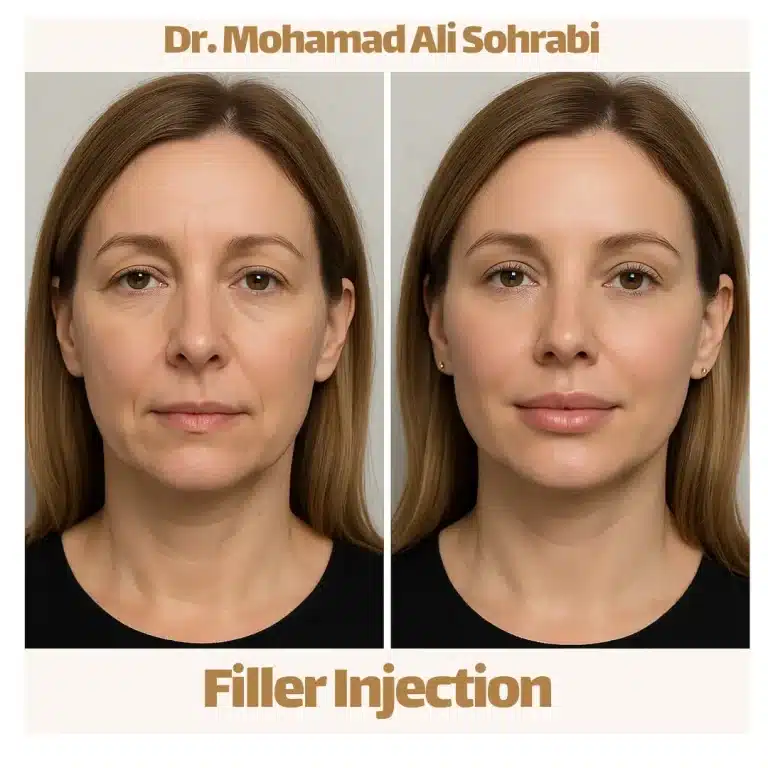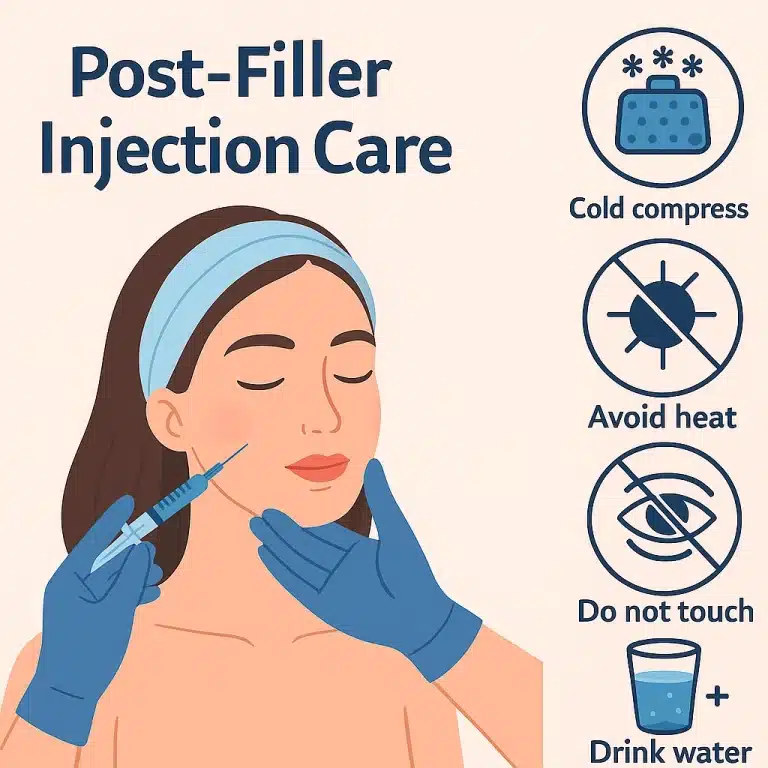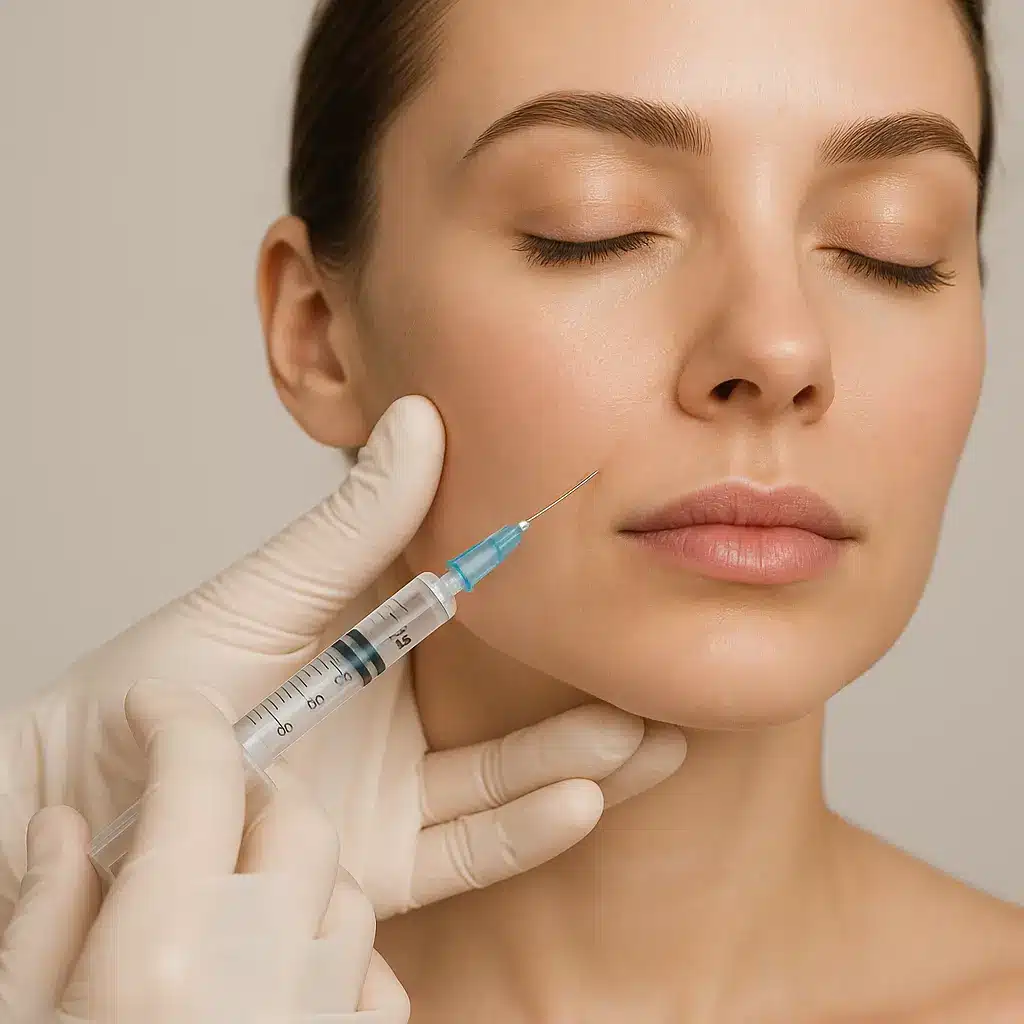Introduction:
Dermal filler injections have become increasingly popular as one of the most popular methods of facial rejuvenation and contouring in recent years. But one of the most frequently asked questions by clients is how long do dermal fillers last? The answer to this question depends on many factors, from the type of filler to your lifestyle and post-injection care. In this article, we’ll take a comprehensive look at everything.

💎What is dermal filler?
Dermal fillers are a type of injectable substance used to fill in lost volume, smooth wrinkles, improve facial contours, or increase the volume of lips and cheeks. Most fillers today are based on hyaluronic acid, a natural substance found in the skin.
💎Types of dermal fillers and their durability
Hyaluronic acid (HA) fillers
- Lasting: 6 to 18 months
- Popular brands: Juvederm, Restylane, Teosyal
- Advantages: Hyaluronidase-soluble, natural, low side effects
Calcium Hydroxyapatite (CaHA) Fillers
- Lasting: 12 to 18 months
- Famous brand: Radiesse
- Feature: Stimulates collagen production in the skin
Poly-L-lactic acid (PLLA) fillers
- Lasting: 2 to 3 years
- Famous Brand: Sculptra
- Feature: Gradual results, suitable for extensive volume reconstruction
Polymethyl methacrylate (PMMA) fillers
- Durability: Permanent (5 years or more)
- Famous Brand: Bellafill
- Features: Long lasting but requires great precision in injection
💎Factors affecting the durability of dermal fillers
Filler type: chemical composition and gel concentration
Injection site:
Under-eye fillers are usually more permanent than lip fillers because there is less muscle movement.
Injection depth: Injections in deeper layers last longer.
Age and body metabolism: Faster metabolism causes filler to be absorbed faster.
The amount of movement in the area: Lips and laugh lines are less durable due to their high movement.
Post-injection care: Observe hygiene tips and avoid direct pressure on the injection site.
Doctor’s skill: Correct injection technique plays a large role in the durability of the filler.
💎How to increase the durability of filler?
. Choosing the right type of filler
In consultation with your doctor, choose a filler with the appropriate concentration and quality.
. Post-injection care
Using cold compresses in the first 24 hours
Avoid massaging or pressing on the injection site.
Avoid heavy exercise and sauna for 48 hours.
. Healthy lifestyle
Balanced diet and adequate water intake
Avoid smoking and alcohol.
Daily use of sunscreen
📍Essential care after filler injection
Do not take blood thinners (such as aspirin) without consulting your doctor.
Avoid laser or heat treatments at the injection site for 2 weeks.
Sleeping on your back the first night

📍Possible side effects of fillers and their relationship to durability
Although fillers are safe, in rare cases, complications such as bruising, swelling, or nodules may occur. Complications usually do not affect the longevity of the treatment, but if an infection or severe reaction occurs, the filler may need to be removed.
📌 Conclusion
The longevity of dermal fillers depends on various factors such as the type of filler, the injection site, age, lifestyle and post-injection care. By choosing the right filler, a skilled doctor and following post-injection recommendations, the duration of the filler effect can be maximized. Proper nutrition, both before and after hair transplantation, is one of the key factors for the success and longevity of the result. A diet rich in protein, vitamins, minerals and sufficient water, along with avoiding unhealthy foods, can speed up the healing process and improve the quality of the transplanted hair.
Frequently asked questions about the durability of dermal fillers
Do fillers get completely absorbed after a while?
Yes, most temporary fillers are broken down by the body over time.
Does extending the filler make it last longer?
Lean proteins, fatty fish, eggs, fresh vegetables, fruits, nuts, and rich sources of vitamins C, D, E, and biotin are the best options.
Does exercise reduce the durability of fillers?
Lean proteins, fatty fish, eggs, fresh vegetables, fruits, nuts, and rich sources of vitamins C, D, E, and biotin are the best options.
What is the best season for filler injections?
Any time is possible, but fall and winter are more suitable due to less sun. In case of nutrient deficiencies or based on a doctor’s recommendation, taking supplements such as biotin, vitamin D, and fish oil capsules can be beneficial, but should be done under a doctor’s supervision.





